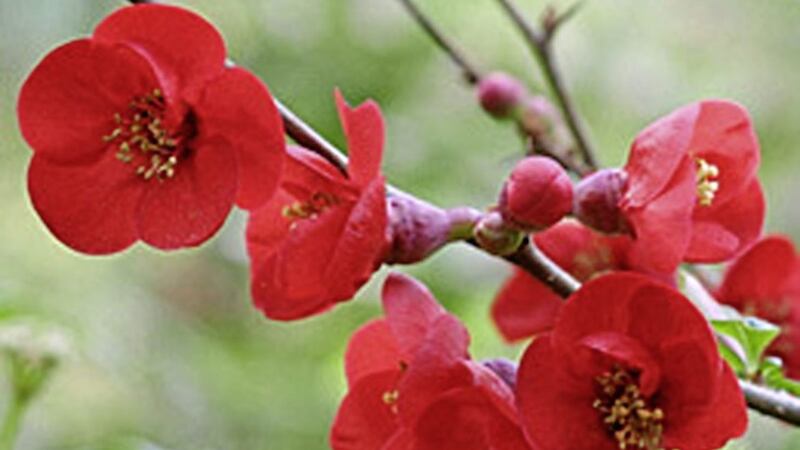MORE than 20 years after first envisaging an overall plan for my garden, it is still evolving. Tastes and priorities change, while grandiose aspirations are curtailed by circumstances and practical considerations. Over the past two decades, vegetable beds have come and gone, an ill-thought-out shelter belt has been felled and the expansive patio I initially sought has since been punctuated by plants to break-up its blandness.
This situation has advantages and drawbacks. On the plus side, it ensures my appetite for the garden is sustained, as I’m continually seeking to fulfil my ambitions and bring new elements to my space. The downside is that it often demands the re-siting of many plants. This isn’t so bad if it’s a herbaceous perennial or small shrub but if it’s anything more substantial, it poses difficulties.
One such cases is a flowering quince, given to me by my father many years ago. I acquired it during what I like to refer to as my ‘naive period’, that time when I knew next to nothing about the plant world. Jim had grown it opportunistically from a cutting and as he handed it over, offered no advice on growing it. I just assumed it was like every other shrub and planted it alongside some New Zealand flax and dog wood. It has prevailed despite me rather than because of me, so come the autumn, it'll be on the move to a more suited site – against a wall.
You see Chaenomeles speciosa, to give it its proper name, is a special plant, in that it needs something to grow against in order to maximise its strengths. Otherwise it's just a tangle of low-growing twigs and its bright pinky red flowers, a real unexpected treat in spring, are lost at low level.
It's important to point out that describing this chaenomeles and others as a 'quince' is a bit misleading, as its only association with the proper quince – Cydonia oblonga – is the fruit it produces – small, hard yellow balls that are great for making jams and jellies. But whereas the real quince is a tree, the imposter is a vigorous, deciduous shrub with small glossy, dark green leaves. Its blossom arrives in early spring, around the same time as the first daffodils, clusters of cup-shaped, five-petalled flowers which give way to the sweetly-scented edible fruit.
Recommended varieties include ‘Nivalis’, which bears pure white flowers, and ‘Lemon and Lime’ with its greenish white blooms. ‘Moerloosei’, which has pink flowers, is one of the larger varieties, spreading up to 2m in each direction if untrained. For a prolific fruiter, opt for ‘Crimson and Gold’, which has a more compact habit and an RHS Award of Garden Merit, while ‘Simonii’ is smaller still and lends itself to ground cover or a low hedge.
Chaenomeles are hardy, generally happy in most reasonably fertile soils and tolerant of partial shade, though open sites produce the brightest flowers and fruit. It is important to stress that most varieties need training, whether it's against a wall or along wires, and will respond positively to a prune after flowering. They also have thorns, so always wear protective gloves when handling. Mine is a testament to the fact that they propagate relatively easily from heel cuttings taken over the summer, while layering of lower growing branches in the autumn will also produce new stock. The only serious health threats are from fireblight and a canker.







